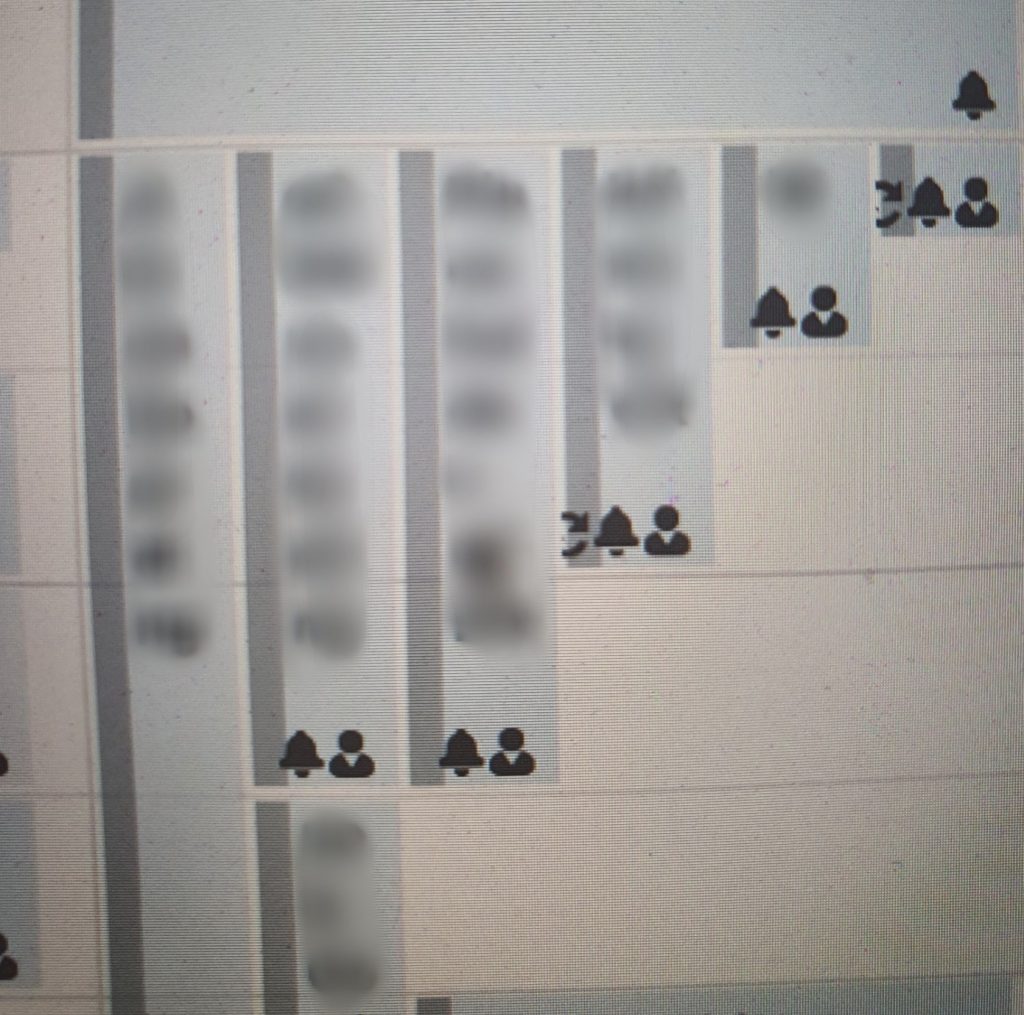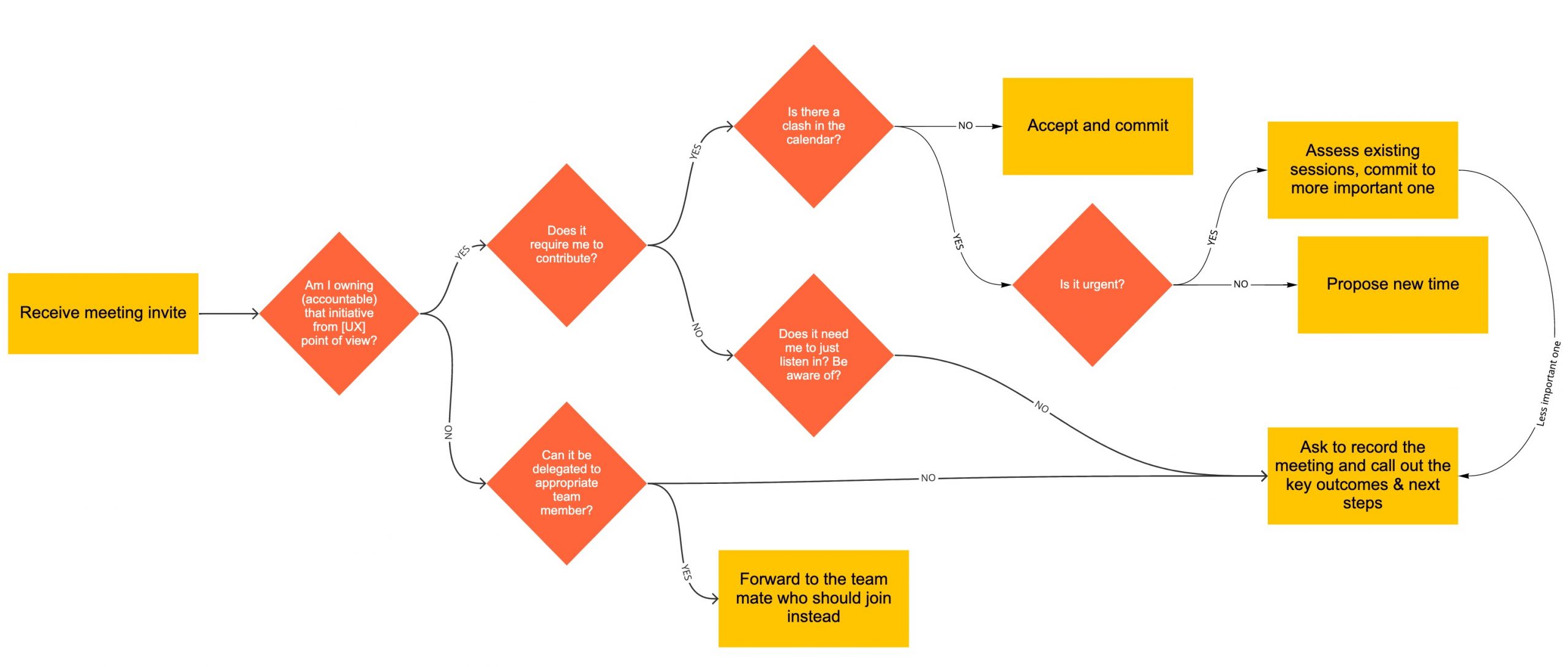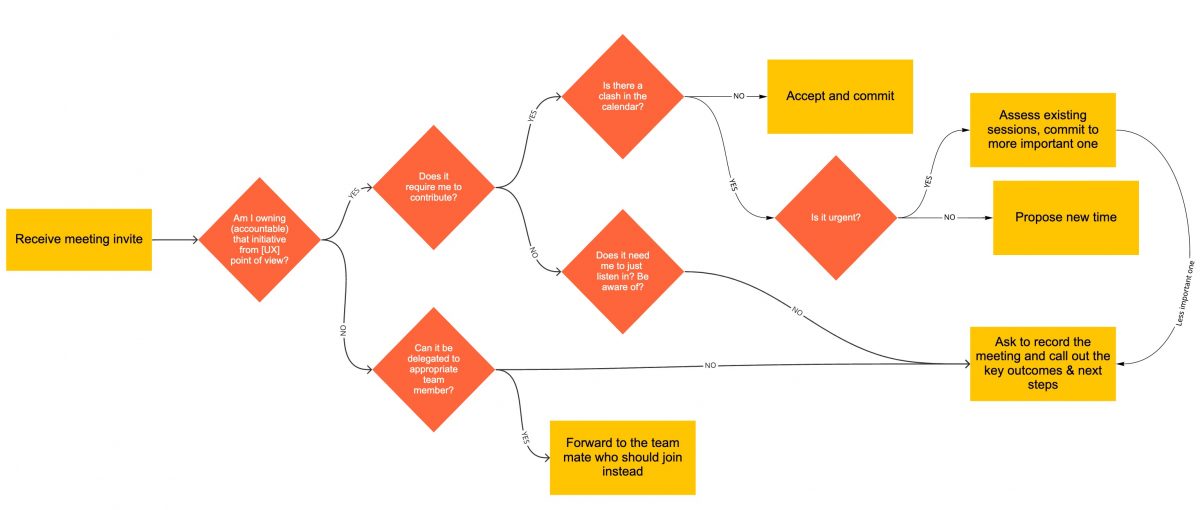Necessary context: post-Covid19 lockdown world where remote work is still the thing, making the majority of the tech workers work off their laptops and zoom app.
I’m a UX design and research manager with over 13 (as of this writing) direct reports, taking care of and providing strategic oversight for the sizeable product and service portfolio. My typical morning for the last 12 months of fully remote work looks like this:

2-6 overlapping meetings in the first couple of hours, and 10-14 meetings in total, every single day. Do I attend them all? Of course not. I need to pick the biggest fish to fry and let the rest be handled by others.
But the bigger issue I recognize is about what hands-on designers face: an utter overload of the meetings that could have been an email or that didn’t need their inclusion, to begin with.
Every few months, I have to revisit this topic and action some changes. I can only guess but because of the remote nature of work, all the measures and ways to optimise will inevitably shift back into the old ways of working*. The scale shifts from spending most of the time doing the UX (researching, facilitating and designing things) to focusing on finding at least one hour a day to do the job, while the rest of the time is being eaten by meetings.
The symptoms that creep in and can be heard exchanged between the people can be summarised with the following:

These aren’t easy to solve; if they would, we wouldn’t have to continuously chip at them.
It doesn’t even matter how senior the designer gets; the issues will still be there. And while the number of meetings might reduce, you’ll always have to manage your time and fend off the endless flow of meetings.
A simple decision flow to deal with this flow could be outlined like this:

There are of course a lot of other factors, such as meeting prioritisation, the things that are in your control vs the one’s that aren’t and many other.
* Perhaps this is a signal of root causes not being framed and addressed appropriately?
